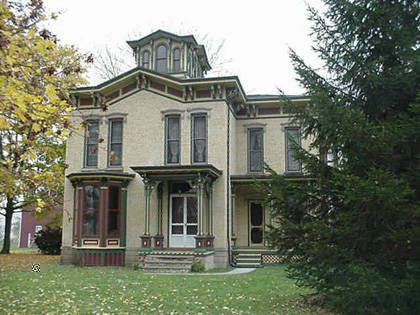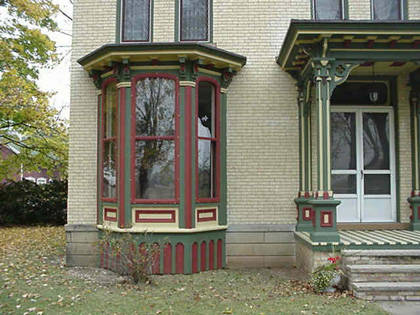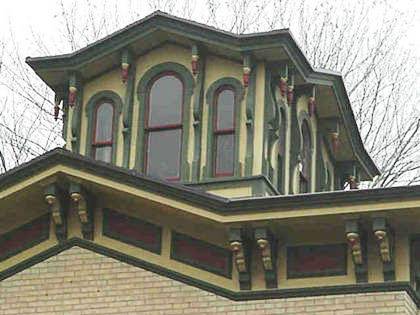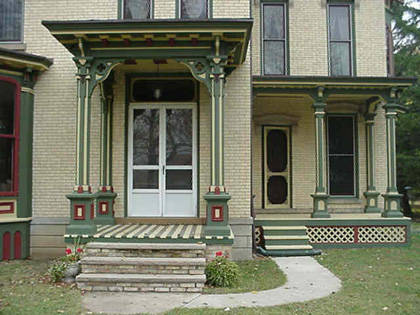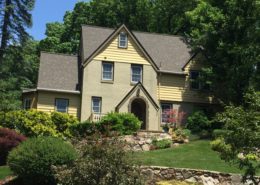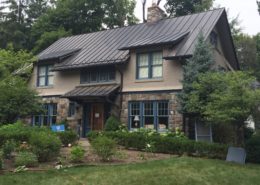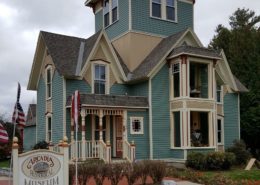History
With the post Civil War building boom and westward expansion, farming in the upper Midwest became very profitable. New and more modern farm houses were needed and many were built in this Italianate style. The most popular source of information for the style was in Andrew Jackson Downing’s book “The Architecture of Country Houses,” published in 1856. The style was supposedly based on rural Italian farm houses in Umbria. This home in a rare yellow brick originally had white trim.
Rural Farm House from the 1870s.
The use of contrasting period colors on the porch steps, porch floor, and posts provide historically correct visual interest. The bay window is an important feature of any Italianate style home. Introduced in America on this architectural style, it is shown in the 1840s via the pattern books of Andrew Jackson Downing. The colors here were designed to link the bay to porches and the roof belvedere. The crowning glory of this Italianate house is its belvedere (Italian for beautiful view). The colors on it and the building’s cornice work together to fasten the top of the house collectively and emphasize the wonderful brackets and moldings.
Goal & Solution
Goal
This house posed an interesting problem because of its yellow brick. The elaborate, highly detailed trim was white and was lost with the very light brick color.
Solution
The utilization of colors from a post Civil War paint book allows all the various wood details to stand out as they were originally intended. I own over three thousand period paint brochures and books from which to draw samples.

